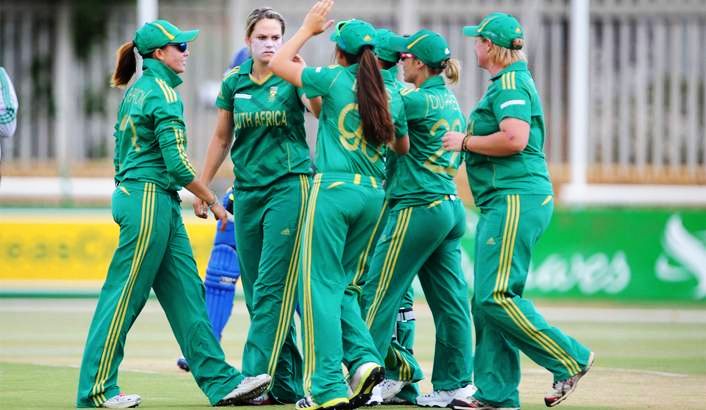Sport
Watershed summer for South African women’s cricket team

For the first time ever, the South African women’s cricket team will play two matches alongside the men. Not only does it mean potentially bigger crowds, but also a few more TV viewers. It’s a big moment, but it’s not without its challenges. By ANTOINETTE MULLER.
It’s taken a while, but the South African women’s cricket team will, for the first time ever, get some national recognition this year. The women’s team will play their summer Twenty20 fixtures as a so-called “curtain raiser” to the men’s matches, with the matches being broadcast on TV.
The South African women’s team will play the England women’s side in three Twenty20s at Paarl, Newlands and the Wanderers. Two of those matches, at Newlands and the Wanderers, will be played ahead of the men’s matches at the same venues.
A further three Twenty20s will be played against the West Indies Women at Kingsmead, Wanderers and Newlands prior to South Africa’s three Twenty20s against Australia.
The incoming women’s teams will also play a number of one-day matches against the South African women, but Cricket South Africa are keeping mum at this point on whether any of these fixtures will be broadcast.
Still, at least it’s a start. For a team who just a few years ago had no central contracts and no means of earning an income from playing sport, it’s a tangible step forward. While some of the women’s players still have to do some sort of work (often in the form of coaching as part of their contracts), at least women’s cricket is slowly moving towards becoming a viable career option in South Africa. Australia and England lead the way in terms of what they offer female cricketers,
Momentum, the people behind the men’s one-day team, deserve a lot of credit for their efforts, as do the South African Cricketers’ Association (SACA). SACA started contract negotiations for the women’s team in 2014 and declined the original offer of only giving women a six-month term. SACA pushed it to 14 months, a standard contract term for the men’s team, and fought to have the women included in their medical insurance arrangements as well as the SACA Player Plus Programme, which looks after education, welfare and personal development, to ensure the women have similar benefits to men.
But women still earn far less than their male counterparts and SACA continues to fight the contract battles on their behalf, including payment for the use of their commercial rights.
“For us, the biggest challenge has been to get everyone to view the women’s game and the players as professionals. Internationally, it has become professional and we need to keep up with the pace. England and Australia are a long way ahead when it comes to professionalism,” SACA CEO Tony Irish told the Daily Maverick.
The focus will be for women to dedicate themselves entirely to playing cricket. While South Africa might not have the same resources as some other countries, ensuring the best contracts and benefits are obtained with the resources available are an integral part of moving the game forward.
Exposure to the sport plays a key role in growing the game. Not just in terms of informing those under a rock that yes, women do play cricket, but also in terms of its commercial value. Exposure on TV and in print mean more value for sponsors and a better chance of making the sport self-sufficient. Again, England have long led the way in terms of broadcasting women’s cricket on TV and, last summer, for the first time, South Africa’s women’s team had their matches broadcast when they toured England. South Africa lost that series, but showed steady improvement as the tour went on.
Now, they will face one of the leading women’s sides once again, this time on their home turf and, with a little bit of careful planning, with home support behind them.
But these double-headers are not without challenges. In essence, it’s a great idea. A two-for-the-price-of-one for fans who can stumble into the stadium early on and watch two matches.
Logistically, however, it’s far more tricky. Men and women cannot share dressing rooms and most stadiums only have two, one for the men and one for the women. Lugging gear out of there before another team arrives can be somewhat of a schlep and that’s where planning becomes a potential stumbling block. In an ideal world, there should not be more than an hour between the men’s and the women’s fixtures, but that makes lugging gear out a bit of a rush job. Leave the time between fixtures too long and you might miss out on the drip-feed crowds who stroll in early. Too much idle time means people are unlikely to stroll in before the so-called “main event” that is the men’s matches. Another potential challenge is that broadcasters are so unfamiliar with the women’s game and its players that what they offer in terms of insight is often severely lacking.
Still, these fixtures do present a potential watershed moment in South Africa’s cricketing history. One can only hope that the broadcast does it justice. DM
Photo by Cricket South Africa.




















 Become an Insider
Become an Insider